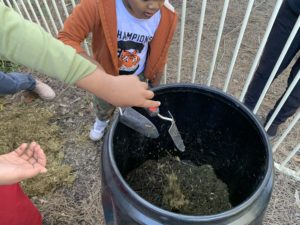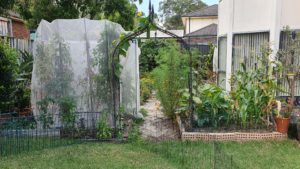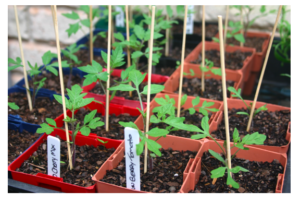Mid winter is often a time that you want to hibernate, but if you resist the urge to slow down and rug up and grab your gardening gloves instead, then you’ll be richly rewarded by the time spring comes around.
Here are three essential jobs for you to address in your winter garden that will give you a head start and have you harvesting tasty organic produce well before others.
1. Make Compost
Gardens need a good feed before they put on their spring growth. An organic fertiliser, like compost, takes time to break down and release nutrients for plants to take up through their root system, so get spreading what you have now in anticipation of the coming season. Spread compost around your fruit trees, and dig it into your vegetable gardens and flower borders.
Now you’ll need to replace the compost that you’ve used, so get cracking on making some more. Compost doesn’t have to be just used in the winter garden, but is a good choice for year round gardening.
With all the fallen leaves from deciduous trees blocking gutters and paths, now is your chance to rake up the dead leaves and collect them for your compost heap. It’s important to add these dry leaves and other dry (or brown) material to your compost in addition to common veggie scraps and lawn clippings. A balance between wet and dry materials (i.e. green and brown materials) will keep your compost ticking over and breaking down really well, without odours or becoming a soggy mess.
2. Make changes
After deciduous trees have lost all their leaves and herbaceous perennials have died down to ground level, winter reveals the skeleton of your garden, showing the framework and design of the garden much more clearly. You can easily take stock of what is working and what needs to be changed. We can sometimes make mistakes when planting new trees and shrubs, often not leaving enough space or planting them in the wrong spot for the amount of sun they need. Moving some of your plants can give them a better chance to thrive, and an ideal time to do that is while they’re dormant during winter.
Define pathways. The winter garden also reveals the flow of your garden and shows up where any incidental and unplanned paths have been created from frequent traffic. So now is a good time to define the natural flow of your garden by making proper paths out of the “dog tracks” that we have made. Define the edges, remove any weeds, put down some Geofabric and top it all up with gravel or sawdust. A well defined walkway will lead the visitor into the garden and down the path to explore what else is in the garden.
3. Make plans for springtime
With a bit of bare space in the winter garden, you’ll be able to see any gaps where you might be able to squeeze in an extra garden bed or extend some existing ones. Get building up the soil now and you’ll have more space to sow your spring veggies early.
As you harvest your winter veggies, top up the soil with compost and let it rest until you’re ready to plant out seedlings as the days get longer and risk of frost passes.
Get a head start on your orchard and buy some bare rooted fruit trees now. This is the most economical way to buy your fruit trees. Remove them from their packaging and spread the roots out so they aren’t tangled, then trim any extra long roots to fit into the prepared planting hole. Make sure your planting hole is big enough to allow the roots to spread out and sit your tree on a mound of soil to hold it in place as you backfill with a 50/50 mix of soil and compost. Place a temporary stake in position now if it’s needed so you don’t damage the root system later. Now remember to give your fruit tree a prune. This will stimulate strong growth in spring and provide a strong solid framework for your new tree.
It seems bizarre to even consider growing tomatoes in the winter garden, but it is certainly time to get started on sowing some seeds now. Select some heirloom varieties, if you haven’t already, and sow the seed into starter squats (or punnet as we call them in Australia) that can be kept inside where it’s nice and toasty. A warm kitchen windowsill may be just the ticket! If you live in a cold area, then a heat mat might be a good idea to help germinate the seeds more quickly. After germinating, transplant the developing seedlings into a small pot and keep them growing in a warm sheltered indoor spot. By the time spring comes round, your tomatoes will be well on their way and you’ll be eating home grown tomatoes way before the neighbours.
So you can see there is not resting for the winter gardener, with lots of jobs to do. Make the most of less demanding things in the winter garden and get onto all those things you said you’d get around to doing now. Make compost, make changes to your garden and make plans for spring. You’ll be glad you did when the new season comes around and you see how much ahead of the game you are.
I’d love to hear from you. Why not send me an email or DM on Instagram or Facebook and let me know your plans for your winter garden.
Want to know how to get the best out of your fruit trees?
Join my VIP Membership and get access to all my masterclasses showing you how to get the best fruit and veggies you’ve ever grown.









 Twitter
Twitter Facebook
Facebook